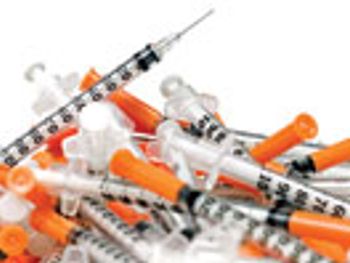
Biosimilars and Biobetters
Latest News


Will biosimilars share a compendial identity like generic drugs do?

Prescription drug usage data on more than one million Marketplace enrollees suggest that costs for specialty drugs are 36% higher for people with Obamacare.

Widespread use and abuse of opioid painkillers is prompting efforts to develop new drugs and formulations that resist abuse while providing relief to legitimate patients.

Eight physician groups wrote to the commissioner of FDA to stress the importance of transparency in biosimilar labeling to decrease prescribing risks.

Epirus Biopharmaceuticals and mAbxience have entered into a development and future distribution deal for Epirus’ lead program, BOW015 (infliximab, reference biologic Remicade), for Latin American markets.

As the biopharma industry awaits FDA’s guidance on biosimilar naming, brand and generic manufacturers establish positions.

Physician confidence in biosimilars and extrapolation of indications are two of the most important factors governing the acceptance and sustainability of biosimilars, say industry panelists.

The agency publishes draft guidance answering industry questions about the Biologics Price Competition and Innovation Act.

The US Court of Appeals granted Amgen’s request to block Novartis’ Neupogen biosimilar, Zarxio, from the US market until the court resolves litigation between the two companies.

Eleven of the leading US biosimilar developers have collaborated to form the Biosimilars Forum, a nonprofit organization formed to expand patient access to biosimilars.

Intellectual property lawyers estimate biosimilar litigation will swell as early as 2018.

The European Pharmacopoeia defines the format and content of monographs for biologicals to keep pace with recent approaches and meet the needs of its users.

FDA releases long-awaited guidance documents regarding the assessment of biosimilarity.

Originator product manufacturers will have to update and improve their processing platforms to stay competitive with the biosimilars coming to market.

The company announced that a pharmacokinetic study comparing ONS-1045 to US- and EU-sourced Avastin will conclude shortly.

Second-generation needle-free injection systems will make parenteral drug administration more convenient, efficient, and safe.

Physician-administered biosimilars under Medicare Part B will be reimbursed at a rate based on innovator drug prices and new changes will make costly innovator Part D drugs easier to exclude from formularies.

FDA approves a biosimilar and loses a commissioner in March.

Drug makers back alternative to FDA labeling update rule.

Biosimilar applicants will not be required to hand over their biosimilar applications and manufacturing dossiers to innovator companies, determines FDA.

Guidance provides labeling standards and an implementation guide for electronic submission of lot distribution reports.

As a result of the decision, Sandoz will be able to immediately launch Zarxio, the first biosimilar in the United States.

BIO and the Colorado BioScience Association urge Colorado Governor Hickenlooper to sign a bill that will help patients gain access to interchangeable biologic products following FDA approvals.

FDA approved Sandoz’s Zarxio (filgrastim-sndz) on March 6, 2015. The approval is a groundbreaking decision, as Sandoz is the first pharmaceutical company to have a biosimilar product approved in the United States. Known as Zarzio outside of the US, Sandoz says its biosimilar filgrastim is already available in more than 60 countries worldwide, has generated more than 7.5 million patient-days of exposure, and is "the most widely used filgrastim in Europe."
